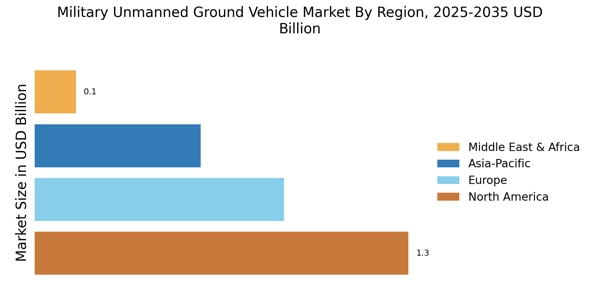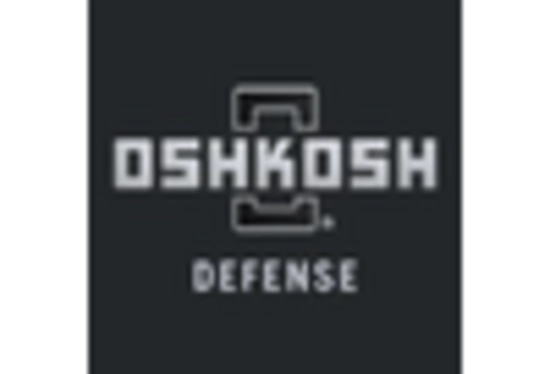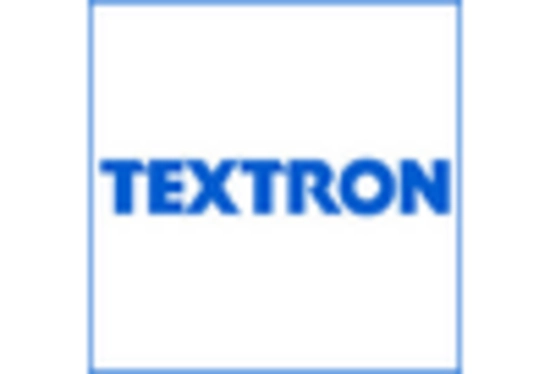The Military Unmanned Ground Vehicle Market is currently characterized by a dynamic competitive landscape, driven by technological advancements and increasing defense budgets across various nations. Key players such as Northrop Grumman (US), General Dynamics (US), and BAE Systems (GB) are at the forefront, each adopting distinct strategies to enhance their market positioning. Northrop Grumman (US) emphasizes innovation in autonomous systems, focusing on integrating artificial intelligence to improve operational efficiency. Meanwhile, General Dynamics (US) is pursuing regional expansion, particularly in Asia-Pacific, to capitalize on growing defense expenditures. BAE Systems (GB) appears to be concentrating on strategic partnerships, collaborating with local defense contractors to enhance its product offerings and market reach. Collectively, these strategies contribute to a competitive environment that is increasingly focused on technological superiority and strategic collaborations.
In terms of business tactics, companies are localizing manufacturing and optimizing supply chains to enhance responsiveness to market demands. The Military Unmanned Ground Vehicle Market is moderately fragmented, with several key players exerting influence over various segments. This fragmentation allows for niche players to emerge, yet the collective strength of major companies shapes the overall market dynamics, fostering an environment where innovation and strategic partnerships are paramount.
In August 2025, Northrop Grumman (US) announced the successful deployment of its latest unmanned ground vehicle, which incorporates advanced AI capabilities for enhanced decision-making in combat scenarios. This development not only underscores the company's commitment to innovation but also positions it as a leader in the integration of AI within military applications. The strategic importance of this deployment lies in its potential to redefine operational tactics on the battlefield, thereby enhancing mission success rates.
In September 2025, General Dynamics (US) secured a significant contract with the Australian government to supply unmanned ground vehicles for reconnaissance and logistics support. This contract is indicative of General Dynamics' strategy to expand its footprint in the Asia-Pacific region, where defense spending is on the rise. The implications of this contract extend beyond immediate revenue; it establishes General Dynamics as a key player in a strategically important market, potentially influencing future defense collaborations.
In July 2025, BAE Systems (GB) entered into a partnership with a local defense firm in India to co-develop unmanned ground vehicles tailored for the Indian military. This collaboration reflects BAE's strategy to leverage local expertise and resources, thereby enhancing its competitive edge in a rapidly growing market. The partnership is likely to facilitate technology transfer and foster long-term relationships with the Indian defense sector, positioning BAE favorably for future contracts.
As of October 2025, the Military Unmanned Ground Vehicle Market is witnessing trends such as digitalization, sustainability, and the integration of AI technologies. Strategic alliances are increasingly shaping the competitive landscape, allowing companies to pool resources and expertise. Looking ahead, competitive differentiation is expected to evolve, with a shift from price-based competition to a focus on innovation, technological advancements, and supply chain reliability. This transition suggests that companies that prioritize R&D and strategic partnerships will likely emerge as leaders in this evolving market.


















Leave a Comment